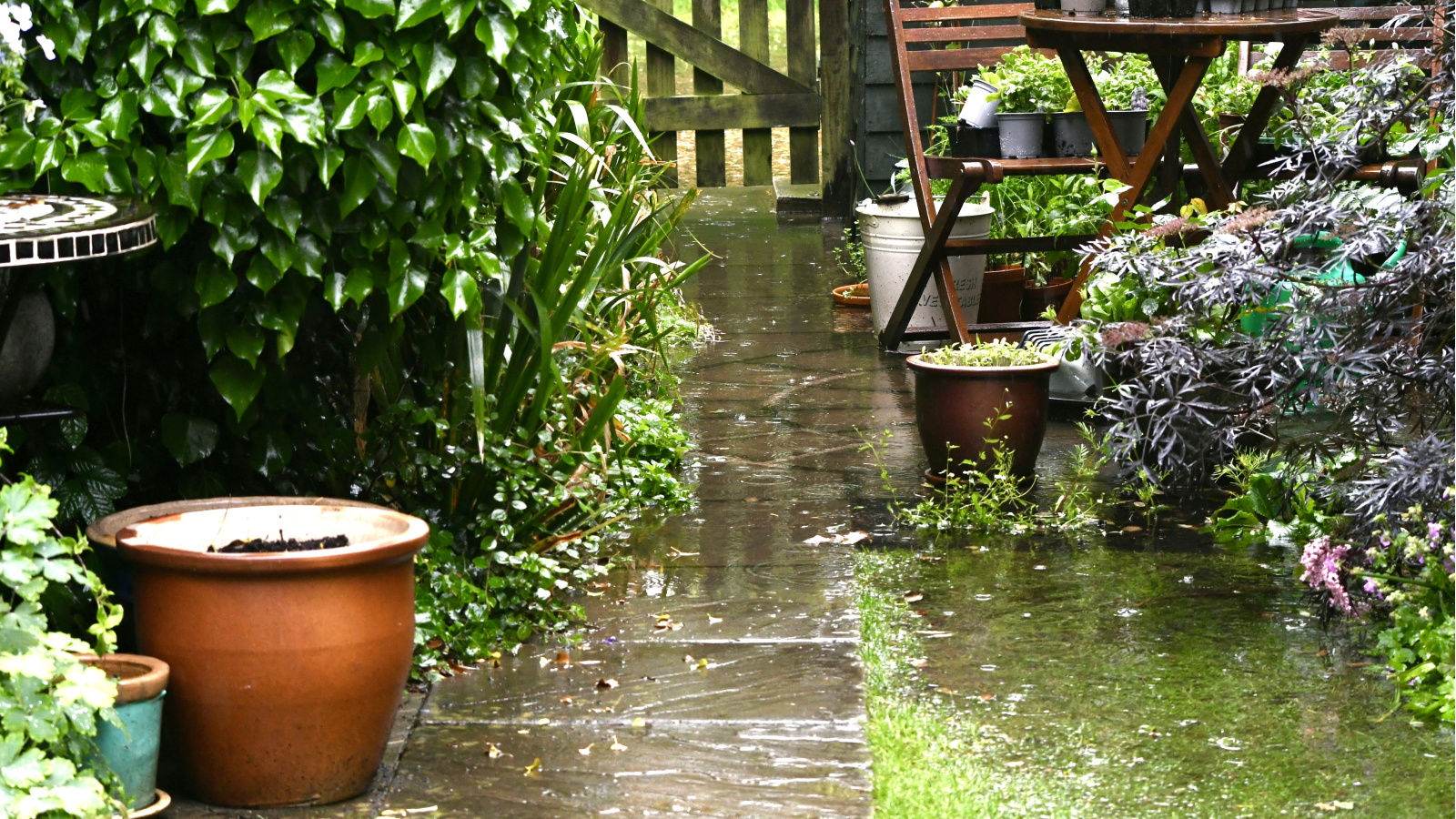
When a storm hits your yard, it has the potential to cause devastating damage. You might be particularly concerned about the safety of your plants in such extreme weather conditions.
Luckily, there are lots of ways to prepare your yard for a storm, and getting ahead to prevent damage to plants is an essential step to take. Whether you have a container garden or carefully curated borders, there are plenty of things you can do to ensure your plants make it through a storm and recover once the harsh weather passes.
You don't need a wide range of tools to protect plants from a storm, either. Our quick and effective methods below will make all the difference in keeping your plants safe in a storm.
5 ways to protect plants from a storm
Failing to protect plants from a storm can result in damage that kills them off, as well as damage to planters and other objects in your yard. Not all damage is irreparable, but it can become expensive to do so. To reduce this risk, we recommend doing these five steps:
1. Move container plants indoors
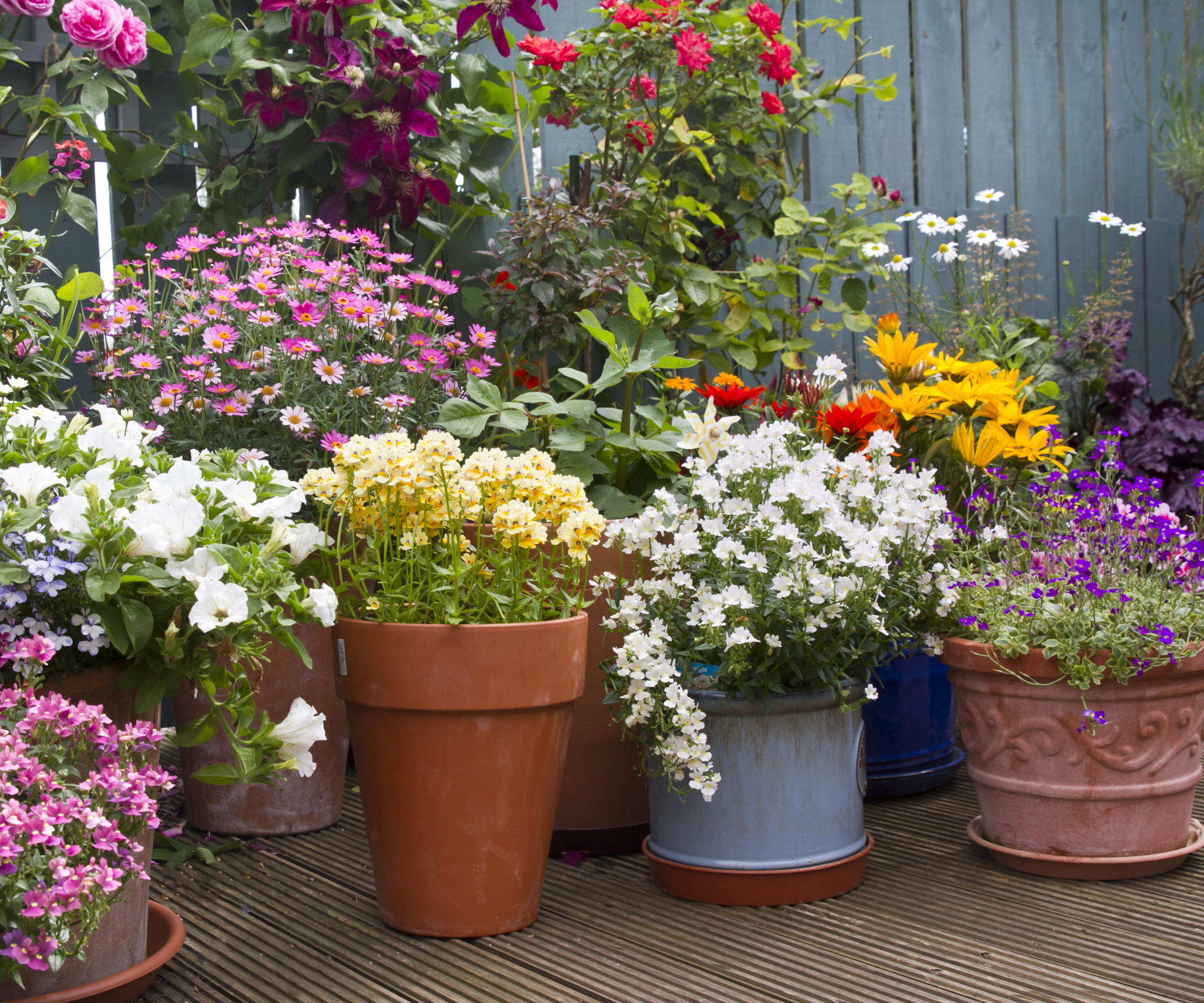
The main thing you want to achieve when protecting plants from a storm is making sure everything is secure. This means if you have a container garden, you should move your potted plants into a sheltered position - like a garage or conservatory.
Much like overwintering a garden, this will protect your plants from exposure to stormy weather, as well as prevent strong winds knocking them over and breaking pots. Broken pieces of pots can be hurled into other plants, buildings, and other yard furnishings in the strong winds of a storm, risking further damage to your garden plants and yard.
'Not only are there strong winds and rain in a storm, but you may also be facing colder temperatures, depending on the time of year,' says Rachel Bull, Head of Gardens at Homes & Gardens. 'For this reason, you should bring indoors any vulnerable plants as you would when overwintering tender plants,' she adds.
2. Clean up debris
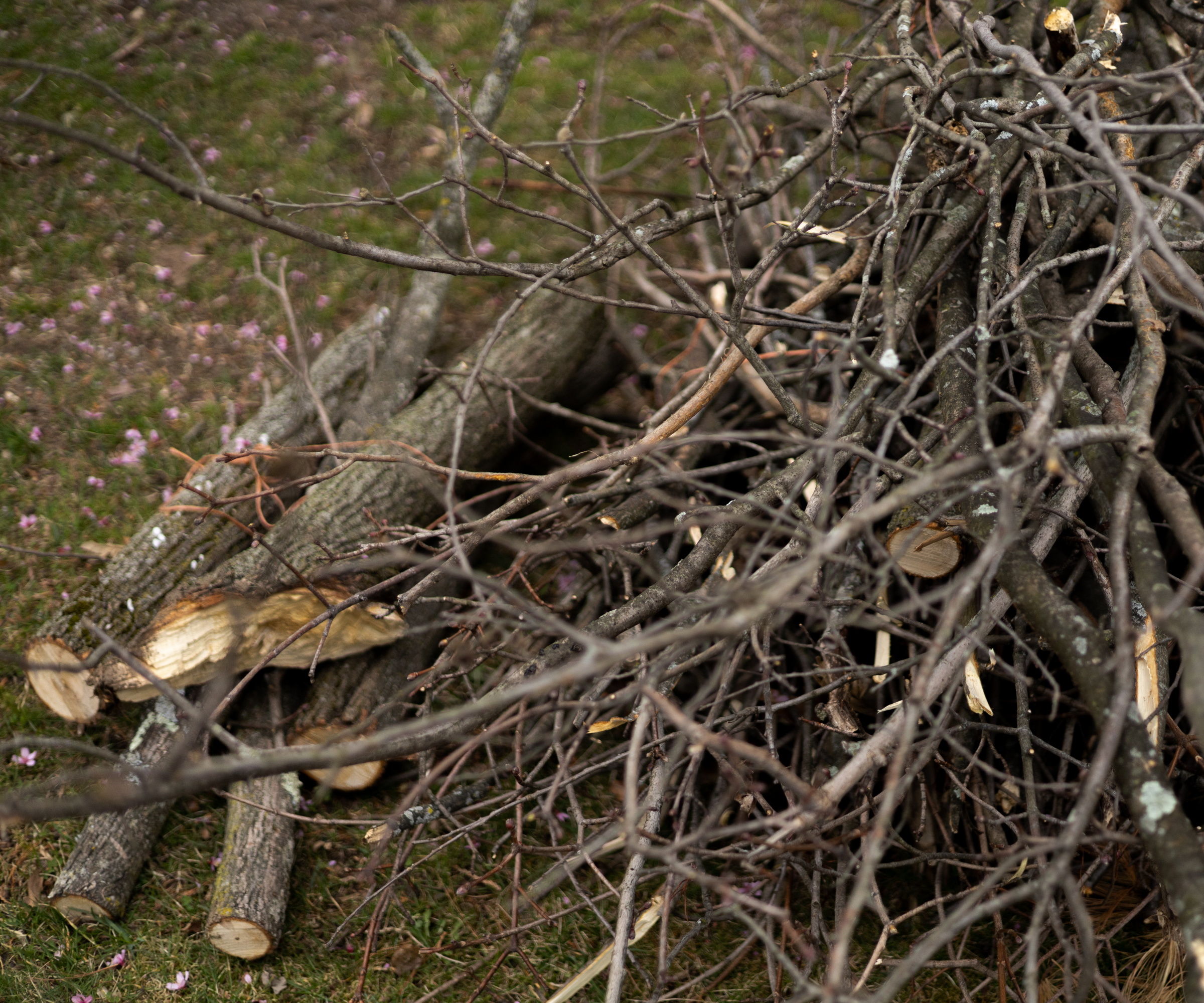
Just like removing the risk of pots being thrown around in stormy winds, it's wise to remove other threats like debris that could crash into your yard plants and damage them.
Things like cuttings from pruning tree branches, wood piles, or even just loose objects should be picked up and disposed of or stored away securely. This takes away the risk of these items snapping and damaging plant stems and foliage.
This material doesn't have to go to waste, however, as brown materials can be perfect for making your own compost or making your own leaf mold. Just remember to take care to secure your compost bin in place during high winds.
3. Prune damaged plants

In a similar vein, damaged branches and stems can also pose a risk to the plants growing in your yard.
This is because they could be ripped off and hurled across your yard in stormy conditions. To prevent this, get ahead by inspecting woody trees and shrubs for any damaged material and cut back any long or low branches that could become hazardous.
Of course, take care to only use essential pruning tools when doing this (like these loppers from Amazon) and avoid tree pruning mistakes to maintain the health of your shrubs and trees.
4. Stake plants that can't be moved
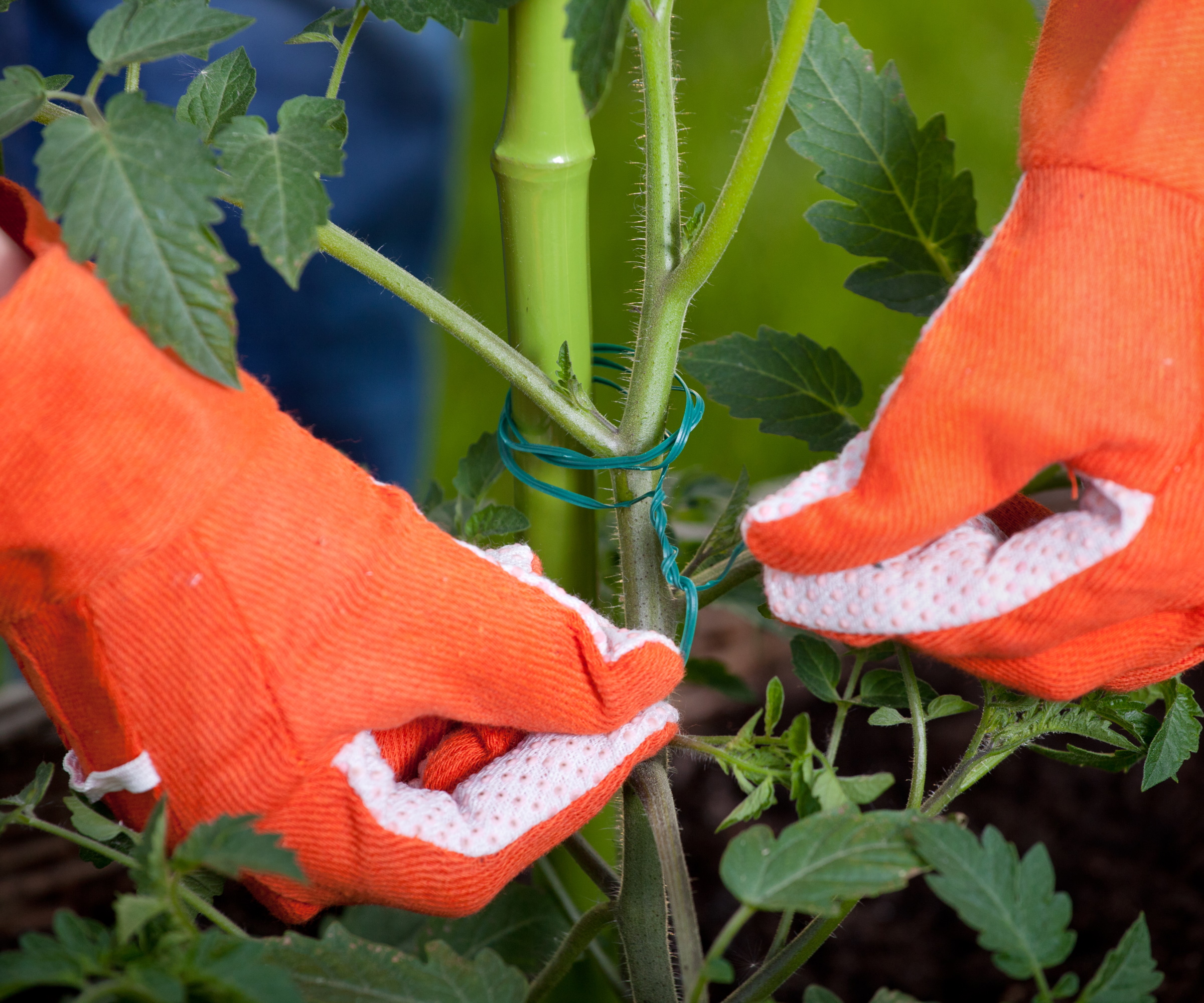
With the moveable plants secured, you should also secure any plants that can't be moved to reduce their vulnerability in a storm.
'There are lots of plants that need staking when a threat of storm arises,' Rachel says. 'Focus on the plants that have long, unsupported stems which are likely to become damaged by heavy rain and strong winds,' she advises.
Stormy weather conditions can cause plant stems to snap, as well as cause a plant to experience wind rock - a condition caused by a plant rocking in the wind, destabilizing them and damaging their roots in the process.
'You can stake your plants with a range of materials, from a trellis to a commercial plant stake (available at Amazon). Use plastic cable ties to secure plant stems in place, as this is the strongest material,' Rachel says.
You might also wish to put a cover over your plants to protect foliage and flowers - these frost covers from Walmart would work well. If doing so, ensure the cover is secured effectively to the ground.
5. Plant hedges for wind protection
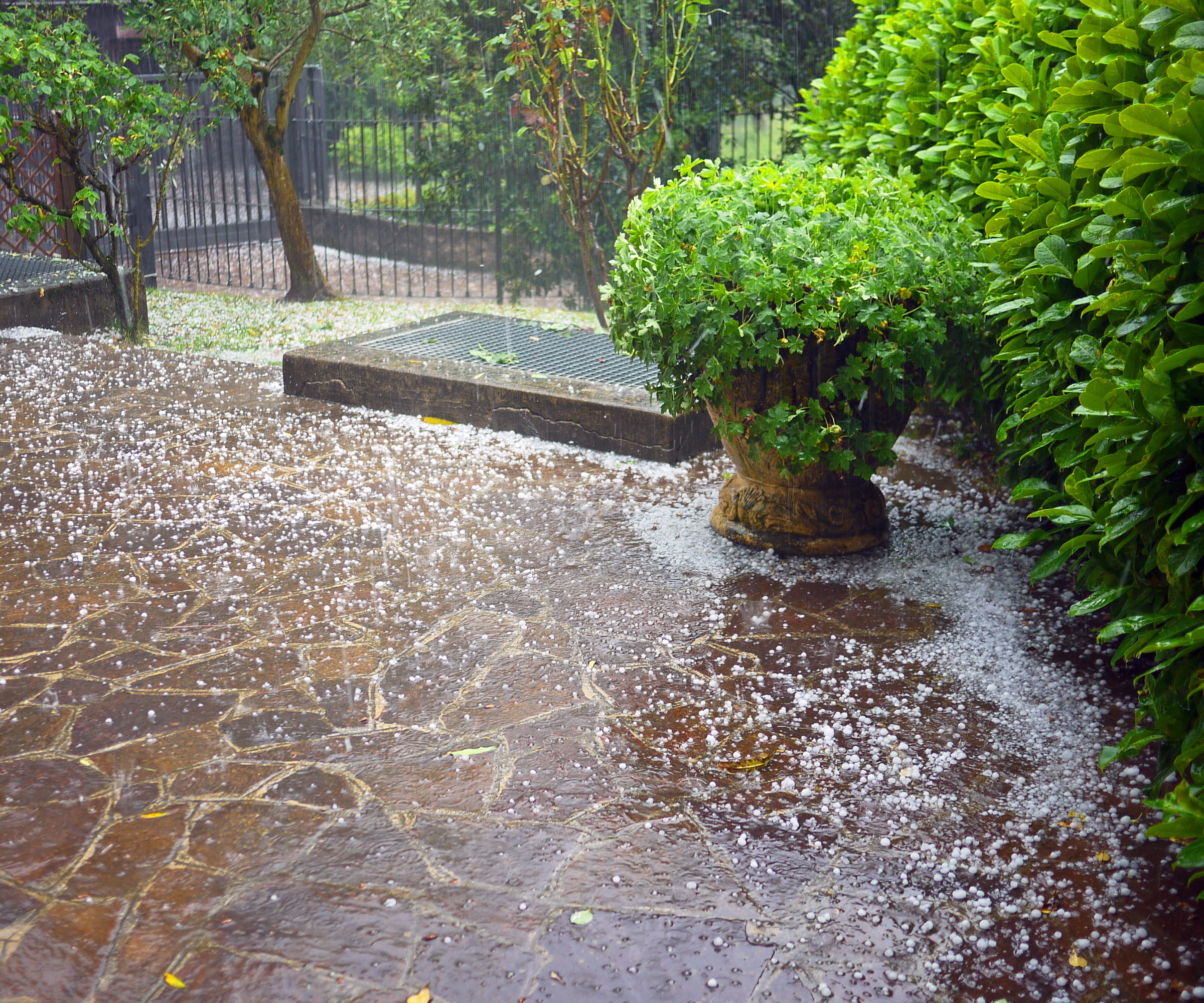
While bringing potted plants indoors and securing others outdoors will do the majority of the work in protecting plants from a storm, you can take extra measures to reduce the impact of strong winds and heavy rain.
Planting some of the best hedging plants, for example, can create a protective barrier. By choosing shrubs and hedges that are tall and dense, you can put in a place a wind-breaker around your more precious border plants.
The bonus of this is there are so many ways to landscape with hedges, so you can plant them both for permanent protection and to add beauty to your yard if you live in an area prone to storms.
Just take care to ensure the hedges you choose grow well in your US hardiness zone and read up on how to plant a hedge correctly to ensure they grow reliably in your yard.
FAQs
How do you protect plants from a snow storm?
When protecting plants from a snow storm, you need to take action to protect plants from frost and snow. Be aware this looks different for different plants, depending on their hardiness and how heavy the snowfall is. It's a good idea to remove snow from some plants, while others can be left alone. A good place to start is covering and moving your most vulnerable, tender plants that are likely to be killed off by frost or squashed by the weight of snow.
For the best chance of protecting plants from a storm, you should of course do these things ahead of a storm arriving. However, sometimes storms can catch us by surprise and you may be left with some damage to plants and your yard. Don't worry, though, there are also lots of things you can do to repair your yard after a storm.







